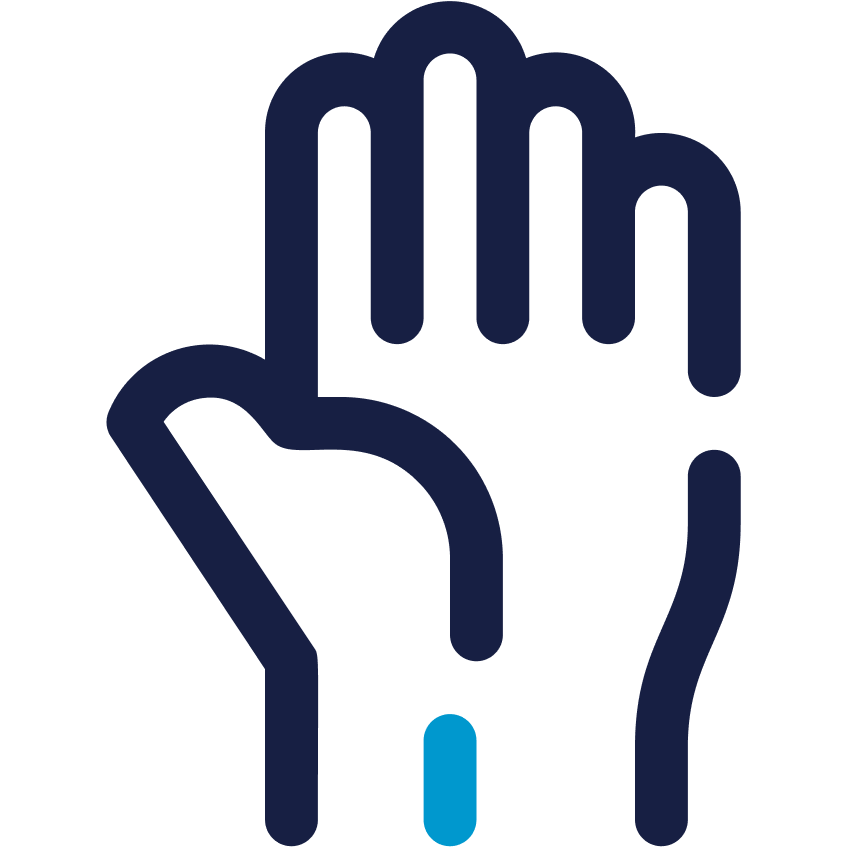
- Common Conditions
- /Hand

A boutonniere injury describes damage to the attachment/insertion point of the extensor tendon of the middle phalanx, which straightens the middle finger. The word boutonniere means “buttonhole,” which describes how the joint will “buttonhole” through the tendon when you have a deformity like this. It’s a classic injury pattern that is often initially missed by treating physicians. In a boutonniere deformity, the central extensor tendon is no longer properly attached at its normal insertion point on the middle phalanx. When this happens, the tendons that extend the last joint on the finger, which are known as lateral bands, will slide down and any attempt to extend the finger will make the proximal interphalangeal joint flex and the distal interphalangeal joint extend. If left untreated, this can ultimately progress to a classic fixed or permanent boutonniere deformity.
The ultimate goal is to diagnose a boutonniere injury before it progresses to a full-blown deformity. In the beginning stages of a boutonniere injury, patients will experience pain over the PIP joint at the insertion site of the tendon. There will also be little to no extension of the middle phalanx and pain and resistance to flexion of the distal joint. While diagnosing a boutonniere injury, your orthoapedic surgeon will need to take x-rays to ensure there is no bony injury.
Anyone can get a boutonniere injury. They are caused by any type of blow to the finger; in some cases, they can also be associated with a laceration or cut. However, boutonniere injuries are most common in sports like basketball, football, and volleyball. Most patients describe the mechanism of injury as a sensation of “jamming” their finger.
Ideally, a boutonniere injury will be diagnosed within 3-4 weeks of the initial injury. If this happens, it is possible for the injury to be treated with splinting and hand therapy. You will be placed in an extension splint for 3-4 weeks, followed by a relative motion splint until the damage is healed. However, you cannot play sports in these braces, so it is important for you to rest and recuperate your injury while it is healing. If your boutonniere injury is chronic or has progressed to a permanent deformity, then surgical reconstruction will likely be required. However, surgical reconstruction is not as reliable as early treatment with hand therapy-directed splinting, so early diagnosis is critically important to achieving the best outcomes.


https://asht.org/sites/asht/files/docs/2022/Boutonniere%20Deformity%202022.pdf
https://www.assh.org/handcare/condition/boutonniere-deformity
https://orthoinfo.aaos.org/en/diseases–conditions/boutonniere-deformity/

